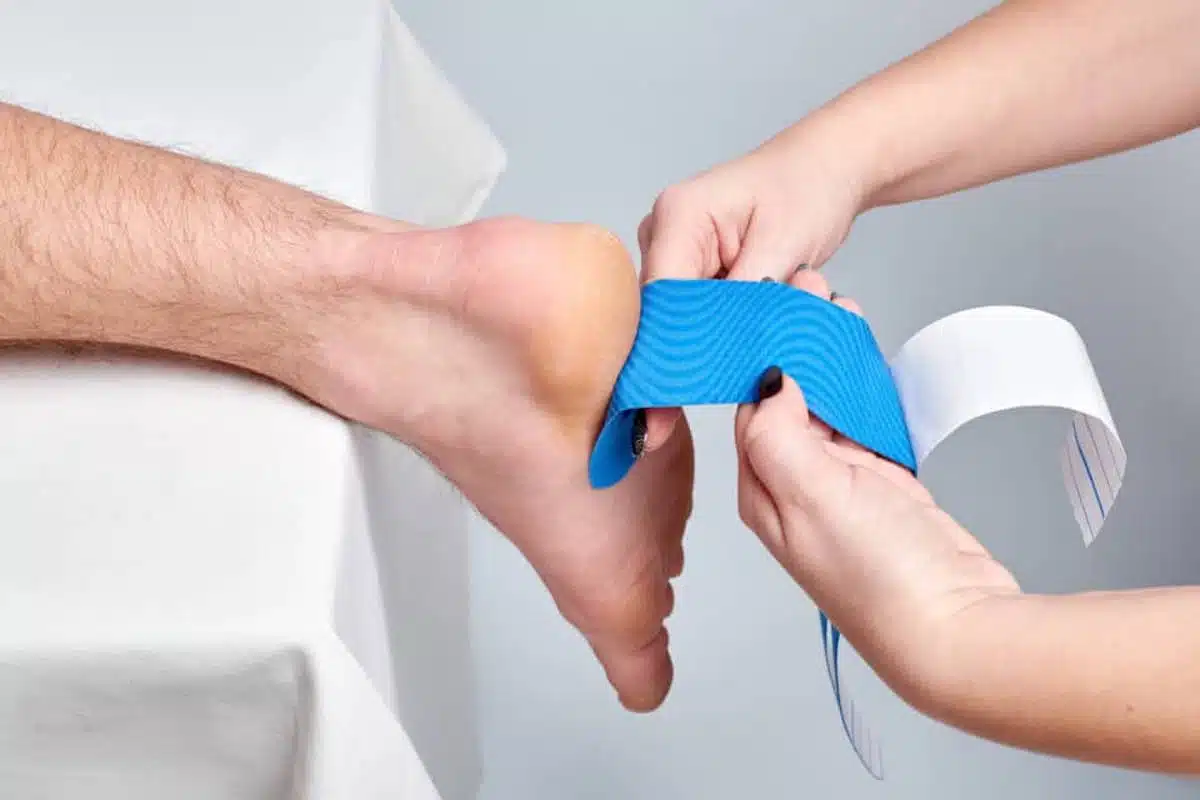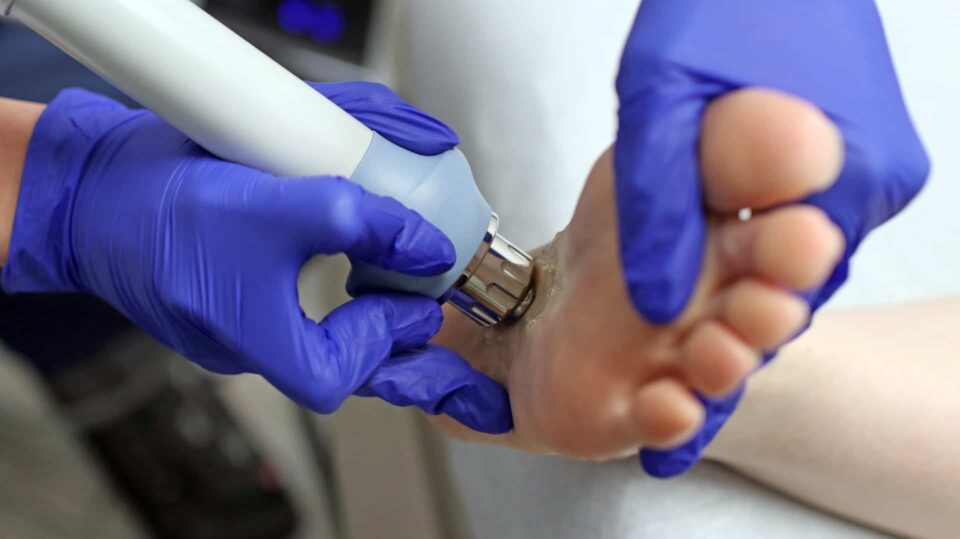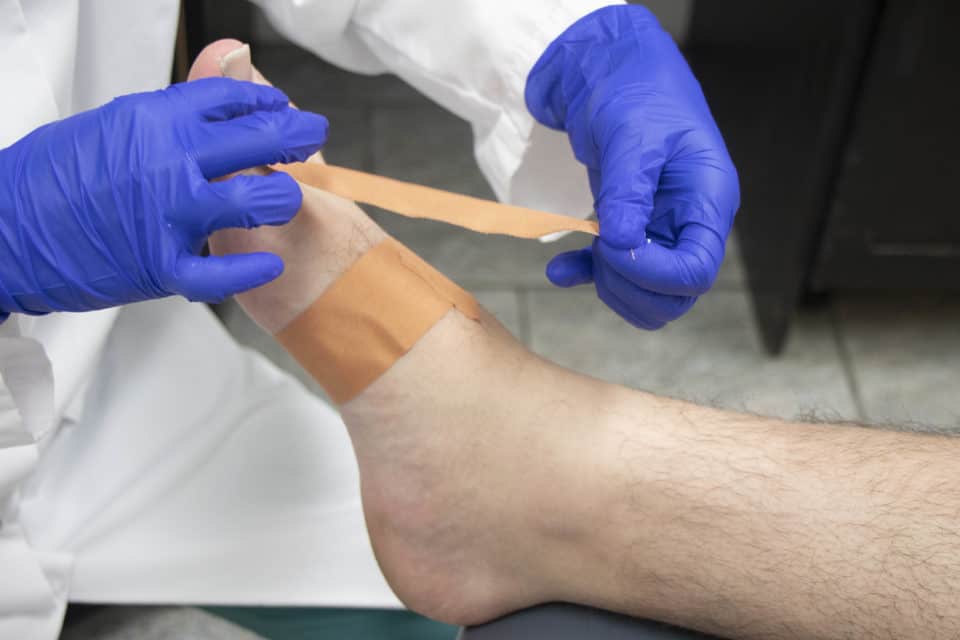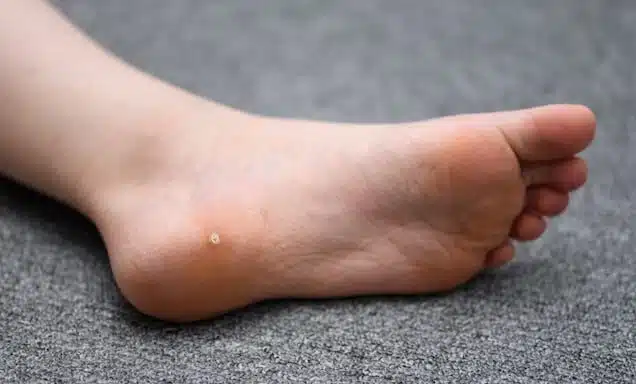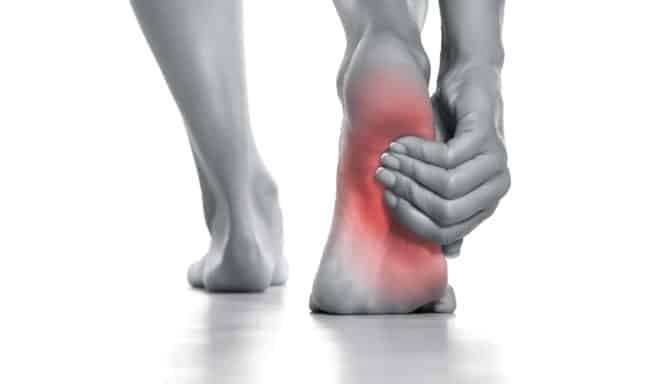Arch pain is among the most common forms of foot discomfort. It can be particularly uncomfortable because of how critical the arch and heel are to the foot. The arch is the supporting foundation of our feet and appropriately resembles the shape of an aqueduct. Given the daily demands of life, it’s easy to see how these structures can become overworked and damaged. The most common cause of arch pain and heel pain is a condition called plantar fasciitis.
Keep reading to learn about the most effective plantar fasciitis treatments, including shockwave therapy, custom orthotics, and pain management solutions, to help you conquer the pain of plantar fasciitis for good.
What’s plantar fasciitis?
Plantar fasciitis is when you experience pain or discomfort in the heel and underside of the foot – including the arch. Inflammation or irritation of the plantar fascia, a thick band of tissue that extends between the heel bone and the arch, triggers plantar fasciitis.
Symptoms of plantar fasciitis may include:
- Pain in the heel or underside of the foot. Pain may peak in the morning or after prolonged periods of standing or walking.
- Stiffness and tenderness in the foot.
- Swelling or redness in the foot.
- Difficulty walking or standing for long periods.
What causes plantar fasciitis?
Plantar fasciitis is a common condition, especially among athletes and people who spend long periods on their feet. Understanding the source of your plantar fasciitis can help determine the best plantar fasciitis treatments for you. Causes of plantar fasciitis include:
- Overuse: Repetitive activities that stress the plantar fascia, such as running, jumping, or standing for long periods, can overwork the plantar fascia, leading to inflammation and pain.
- Lower leg biomechanics: Some foot structures can stress the plantar fascia and increase the risk of plantar fasciitis. Flat feet or high arches, for instance, may cause plantar fasciitis by adding stress to the muscle group.
- Footwear: Improper footwear that (1) doesn’t provide enough arch support, (2) doesn’t have enough support or cushioning, or (3) doesn’t fit properly can all contribute to plantar fasciitis.
- Age: Plantar fasciitis is common in people over 40, as the plantar fascia loses elasticity and becomes more prone to injury with age.
- Medical conditions: Obesity, diabetes, and osteoarthritis can increase the risk of plantar fasciitis.
- Tight or weak muscles: Tight muscles in the calf or foot can put extra stress on the plantar fascia, leading to inflammation and pain.
- Weight: Sudden weight gain can add stress to the plantar fascia before your body acclimatizes to the high support requirement.
The causes of plantar fasciitis can vary from person to person, and a combination of factors may contribute to the development of the condition. Consulting with a healthcare professional, such as a chiropodist, can help identify the underlying causes of your plantar fasciitis and guide appropriate treatment.
What are the effective treatment methods for plantar fasciitis?
There are many effective treatments for plantar fasciitis. Depending on the severity of the condition, you can treat the pain and discomfort yourself or be better off seeing a foot specialist. We recommend the following treatments for plantar fasciitis:
Rest
Avoiding activities that cause pain can help reduce inflammation and allow the plantar fascia to heal. Rest is the number one treatment method for plantar fasciitis as you remove the source cause. You may only need a few days of recovery, but more severe cases may need up to 4-6 weeks. After adequate rest, you may slowly resume physical activity and be on your feet.
Ice
Applying ice to the affected area can help reduce pain and swelling. You can freeze a water bottle, and rest your foot on top of it while sitting. The cold therapy reduces inflammation.
Footwear modifications
Wearing supportive shoes or inserts can help reduce stress on the plantar fascia and improve foot biomechanics. You should also remove ill-fitting footwear from your closet. Instead, choose one of our best shoes for plantar fasciitis relief.
Physical therapy
Physiotherapy and massage therapy effectively treats plantar fasciitis if you prefer not to DIY. At home, you can self-massage by rolling a tennis ball or frozen water bottle under the foot. Self-message strengthens the foot arch muscles and relieves tension in the inflamed plantar fascia.
Stretching and strengthening are also critical parts of plantar fasciitis treatment. Towel stretches, calf stretches, tennis ball rolls, and marble pickups can help strengthen the arch and heel. Find out how to effectively do plantar fasciitis exercises here.
Shockwave therapy
This non-invasive innovative treatment delivers high-energy sound wave pulses to the affected area. It triggers your body’s natural healing response to repair the plantar fascia and reduce pain. Shockwave therapy is scientifically proven to be a highly effective treatment for plantar fasciitis pain persisting longer than six months.
Custom orthotics
Custom orthotics and orthopedic shoes support the arches of your feet and reduce stress on the plantar fascia. Both also encourage proper heel-to-toe gait, which, combined with arch support, can prevent a recurrence.
Taping
Taping isn’t just for sports. Elastic therapeutic taping techniques may prevent unwanted movements that increase strain on the plantar fascia. For example, research finds that “in the short-term, taping is beneficial in treating plantar fasciitis. The best evidence exists for low dye taping and calcaneal taping.” Behind-the-scenes, taping provides stability and structure to the muscle group. Our chiropodists at Feet First Clinic can skillfully and therapeutically tape the feet and toes to treat and prevent a variety of foot conditions and deformities.



